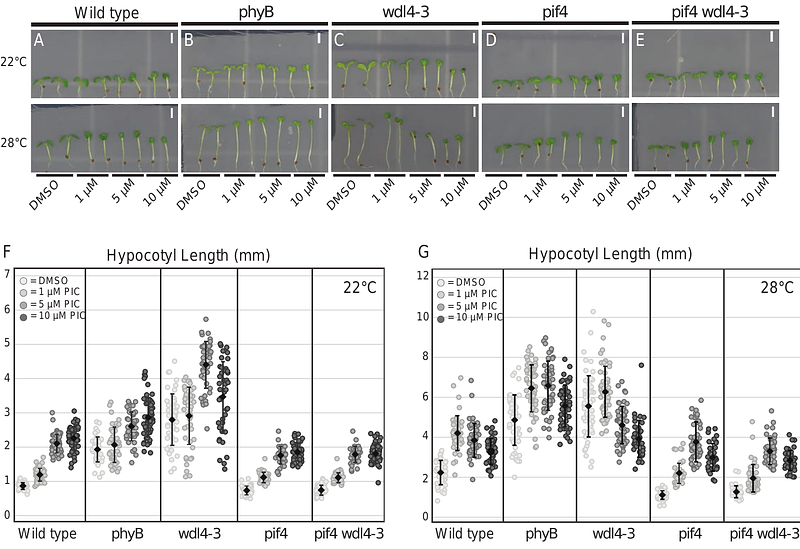WDL4 is a microtubule associated protein required for phytochrome B dependent thermomorphogenesis

WDL4 is a microtubule associated protein required for phytochrome B dependent thermomorphogenesis
Schaefer, K.; Shaw, S. L.
AbstractFlowering plants evolved an array of environmental sensors important for guiding adaptive morphological responses. The response to elevated ambient temperature involves the thermo-conversion of the light-sensing protein, PHYTOCHROME B (PhyB), leading to the activation of the nuclear transcription factor, PHYTOCHROME INTERACTING FACTOR 4 (PIF4). Here we employ temperature and light treatments to dissect the role of WAVE DAMPENED2-LIKE 4 (WDL4), a microtubule associated cytoplasmic protein, in modulating this signaling pathway. The WDL4 mutant (wdl4-3) phenocopies the loss of function phyB-9 mutant at both 22{degrees} and 28{degrees} C for seedling and adult growth responses. Similarly, seedling hypocotyl elongation responses to red and far-red light exposure are strongly correlated between phyB-9 and wdl4-3. Introduction of the pif4-101 mutation into the wdl4-3 background blocks wdl4-3 hypocotyl hyper-elongation, indicating a specific PIF4 requirement. Addition of exogenous auxin, shown to rescue the pif4 thermomorphogenetic response, restores hypocotyl elongation to wild type levels in the pif4 wdl4-3 double mutant at 28{degrees} C, but fails to elicit the wdl4-3 hyper-elongation phenotype indicating additional factors beyond auxin level modulating the thermomorphogenesis. Our data place a microtubule associated protein as a key regulator of PhyB-dependent thermomorphogenesis and photomorphogenesis response pathways.